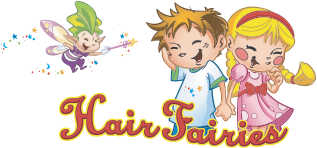Head lice is a common but bothersome condition that can affect anyone, regardless of hygiene or lifestyle. The battle against these pesky parasites often leads to a crossroads: choosing between over-the-counter and prescription treatment options.
Whether you're dealing with a first-time infestation or battling recurrent outbreaks, join us as we navigate the landscape of head lice treatment options.
Understanding Head Lice
Head lice are tiny insects that infest the hair and scalp. These parasitic bugs are most common among preschool and elementary school-aged children, though anyone can become infested if in close contact with someone who already has head lice.
The life cycle of head lice
The life cycle of head lice consists of 3 stages: nit, nymph, and adult.
- Nits are lice eggs. They are hard to see and are often confused with dandruff or hair spray droplets.
- Nits hatch into nymphs, immature lice that grow into adults within one to two weeks.
- Adult lice are about the size of a sesame seed, have six legs, and are tan to grayish-white. In persons with dark hair, the adult louse will appear darker.
Read Lice Eggs, Nits, Nymphs & Adults: FAQ for more on the lice life cycle.
Symptoms of lice infestation
The most common symptom of a head lice infestation is itching on the scalp, neck, and ears. This allergic reaction to louse bites may not occur until several weeks after infestation.
Other signs include visible nits or lice in the hair, sores on the head from scratching, irritability, and difficulty sleeping since lice are more active in the dark.
Over-the-Counter Treatments for Head Lice

There are several over-the-counter (OTC) options available for treating head lice. When used correctly, these treatments can be effective and help eliminate adult lice and their eggs (nits).
Common OTC lice treatment options
Two of the most commonly recommended OTC treatments for head lice are Permethrin lotion 1% (Nix) and Pyrethrins combined with piperonyl butoxide.
- Permethrin is a synthetic insecticide that kills lice by affecting their nervous system.
- Pyrethrins are natural insecticides derived from chrysanthemum flowers. Piperonyl butoxide enhances the effect of pyrethrins.
Potential side effects of these treatments can include itchiness, redness, or swelling at the application site.
What is the strongest over-the-counter lice treatment?
The OTC products listed above have been recognized for their effectiveness in combating head lice.
However, it's important to note that “strongest” can be subjective and may depend on individual factors like the severity of the infestation or potential allergies to certain ingredients.
While these OTC treatments are effective, it's important to remember that successful lice elimination often requires a multi-faceted approach, including regular checks, hygiene practices, and environmental cleaning.
If OTC treatments do not work or you're dealing with a severe infestation, it's advisable to seek professional help.
Limitations of OTC lice treatments
While these treatments can be effective, they do have their limitations.
These OTC treatments may not kill all the nits during the first treatment, requiring a second treatment to catch newly hatched lice before they can lay new eggs.
Moreover, some lice populations have developed resistance to common OTC treatments, making them less effective. This resistance varies by region, so what works well in one area may not work well in another.
Prescription Treatments for Head Lice

While over-the-counter treatments are often the first line of defense against head lice, there are situations where prescription treatments may be necessary. These treatments tend to be more potent and may be recommended when lice show resistance to OTC products or when treating younger children.
Newer FDA-approved prescription treatments
The FDA has approved several newer treatments for treating head lice.
- Ivermectin is a broad-spectrum anti-parasitic agent that kills lice by paralyzing them.
- Spinosad works by causing the lice to become hyperactive and then die.
- Malathion is an insecticide that kills lice by disrupting their nervous system.
Prescription treatments can be highly effective at killing both lice and nits. They are often recommended if OTC treatments have failed, if the person has a history of allergic reactions to OTC products, or if the infestation is severe.
Side effects of prescription lice treatments
Like all medications, these prescription treatments can have side effects.
- Ivermectin may cause redness and irritation at the application site.
- Spinosad can result in redness and skin irritation.
- Malathion may cause scalp irritation, chemical burns, and stinging sensations.
It's important to follow the healthcare provider's instructions carefully when using these treatments, including avoiding contact with eyes and not inhaling or ingesting them.
Does a prescription lice treatment work better than over-the-counter?
Choosing the right treatment can often be confusing when dealing with a head lice infestation.
OTC head lice treatments like permethrin (Nix) or pyrethrins (Rid) are often the first line of defense. They are readily accessible, inexpensive, and effective when used as directed. However, they may not always be the most effective in severe infestations or resistance to these treatments.
On the other hand, prescription lice treatments have shown to be effective even when OTC treatments have failed. These treatments may be necessary for more stubborn cases and are typically prescribed by a doctor when OTC medications do not work.
Both OTC products and prescription treatments aim to kill live lice and their eggs (nits). Still, the effectiveness can vary depending on several factors: the severity of the infestation, the presence of any resistance, and the proper treatment application.
Natural Remedies for Head Lice
In the quest for effective head lice treatment, many families and health practitioners turn towards natural remedies as gentler, chemical-free options.
These methods can be particularly appealing for those seeking non-toxic alternatives or when dealing with recurrent infestations where traditional treatments have failed.
Popular natural remedies
Natural lice treatment options often involve ingredients found in the home or readily available from health food stores. Here are some commonly used natural remedies:
- Tea tree oil: Known for its natural insecticidal properties, tea tree oil is a popular choice for lice treatment.
- Coconut oil: Acting as a suffocating agent, coconut oil is applied liberally to the hair and scalp, making it difficult for lice to breathe and move.
- Olive oil: Like coconut oil, olive oil is thought to suffocate lice.
- Vinegar: While not a lice killer, vinegar's high acidity can help dissolve the glue that nits use to cling to the hair shaft to make removing them easier with a nit comb.
Manual nit combing
The cornerstone of any natural lice treatment is nit combing. This method requires a fine-toothed metal lice comb and patience to comb through small sections of wet, conditioned hair to remove lice and nits.
Check out our lice treatment videos for more help!
Advantages of natural treatments
The safety of natural remedies is a significant advantage.
- Safe to use: These methods are free from chemical pesticides, making them safe for repeated use, especially for young children, pregnant women, and individuals with sensitivities to chemical treatments.
- Battles resistance: Natural remedies and nit combing do not contribute to developing resistant lice strains, a growing concern with chemical treatments.
Disadvantages of natural treatments
However, it's important to note that while these remedies may seem harmless, they are not without some minor risks.
For instance, some essential oils can cause skin irritation or allergic reactions if not properly diluted, or an allergy to the plant already exists.
Similarly, household products like mayonnaise or olive oil, which are sometimes used in an attempt to suffocate lice, can be messy and are not proven to be effective on their own.
Do natural lice treatments actually work?
Yes, natural lice treatments can work, particularly when used diligently and combined with thorough manual nit combing.
While the efficacy of natural remedies may vary and is less documented in scientific research than chemical treatments, many families and health practitioners find them effective alternatives for managing head lice infestations.
The key to the success of natural treatments lies in the meticulous application of these remedies and the consistent use of a fine-toothed nit comb to manually remove lice and nits from the hair.
For example, at Hair Fairies, we only use all-natural products and a patented nit comb to treat and eliminate lice (aka Nit-Zapping!). This is the MOST effective method to get rid of lice.
Choosing the Right Head Lice Treatment

Each treatment method offers distinct advantages, whether the immediate accessibility of OTC options, the targeted power of prescription treatments, or the gentle, eco-friendly approach of natural methods.
Hair Fairies recognizes the complexity of choosing the best lice treatment. We're dedicated to offering non-toxic, effective solutions and personalized care. Whether you need advice, treatment options, or support, Hair Fairies is here to guide you to a lice-free life with expertise and care.
Join us on a stress-free journey to overcoming head lice, ensuring your family's health and peace of mind!




Comments (0)
There are no comments for this article. Be the first one to leave a message!